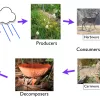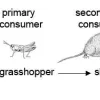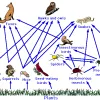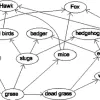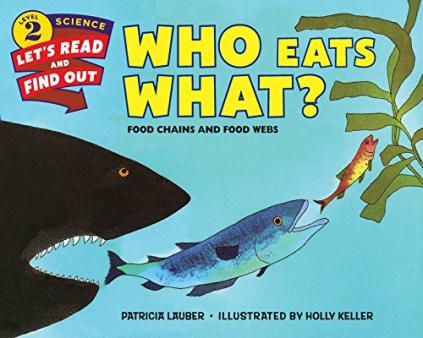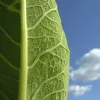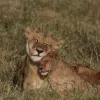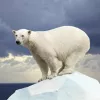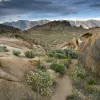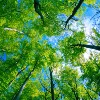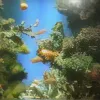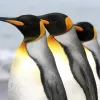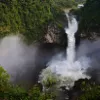Important update from TheSchoolRun
For the past 13 years, TheSchoolRun has been run by a small team of mums working from home, dedicated to providing quality educational resources to primary school parents. Unfortunately, rising supplier costs and falling revenue have made it impossible for us to continue operating, and we’ve had to make the difficult decision to close. The good news: We’ve arranged for another educational provider to take over many of our resources. These will be hosted on a new portal, where the content will be updated and expanded to support your child’s learning.
What this means for subscribers:
- Your subscription is still active, and for now, you can keep using the website as normal — just log in with your usual details to access all our articles and resources*.
- In a few months, all resources will move to the new portal. You’ll continue to have access there until your subscription ends. We’ll send you full details nearer the time.
- As a thank you for your support, we’ll also be sending you 16 primary school eBooks (worth £108.84) to download and keep.
A few changes to be aware of:
- The Learning Journey weekly email has ended, but your child’s plan will still be updated on your dashboard each Monday. Just log in to see the recommended worksheets.
- The 11+ weekly emails have now ended. We sent you all the remaining emails in the series at the end of March — please check your inbox (and spam folder) if you haven’t seen them. You can also follow the full programme here: 11+ Learning Journey.
If you have any questions, please contact us at [email protected]. Thank you for being part of our journey it’s been a privilege to support your family’s learning.
*If you need to reset your password, it will still work as usual. Please check your spam folder if the reset email doesn’t appear in your inbox.
Food chains
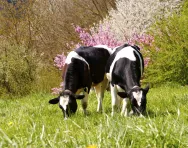
Most of us enjoy eating, and taking the calories and nutrition from the food we eat is important for life.
Eating food gives us energy and this energy powers everything we do, from playing a favourite sport to studying for a maths test or playing a game. It helps us fight off illness and helps us think. It makes us grow and keeps our hearts beating and the blood circulating through our bodies. Without energy from food, we could not live. This applies to every living thing on earth. Microbes, beetles, mice, hawks, flowers, salmon, grass, trees … if it’s alive, it needs energy.
Energy passes from one animal to another as they eat plants or one another. This flow of energy from one living thing to another is called a "food chain."
Top 10 facts
- The food chain is the transfer of energy from one species to another.
- All living things need energy for growth and health.
- Within a food chain, some living things create the energy (producers) and some use the energy (consumers).
- Plants are producers of energy, as they make their own food (using sunlight, soil, and other elements).
- Animals are consumers, because they have to eat other animals and plants.
- There are four different types of consumers in the animal kingdom. A carnivore is an animal that only eats other animals. An herbivore is an animal that only eats plants. An omnivore is an animal that eats both plants and animals. A scavenger is an animal that eats dead animals.
- A food chain usually begins with a plant (which gets its energy from sunlight and nutrients from the soil). The plant could then eaten by an insect. The insect is eaten by a bird. The bird is eaten by a large mammal. The mammal dies after being hit by a car. It decomposes and is broken down and used as food by bacteria and fungi.
- There are more than 100,000 different types of decomposer organisms. These simpler nutrients are returned to the soil and can be used again by the plants. Then the energy chain begins all over again.
- If one level is removed from the food chain, it can have disastrous results. For example, if there is a dramatic fall in the number of aphids, the ladybirds who feed mainly on the aphids will also suffer.
- Humans are at the end of the food chain. They eat both plants and animals that have consumed other forms of energy.
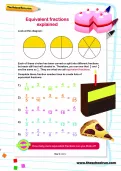

Boost Your Child's Learning Today!
- Get a tailored learning plan for your child
- Complete the activities added each week
- Watch your child's confidence grow!
Did you know?
- Food chains can link together to form food webs. This happens when creatures may follow more than one pathway (or eat more than one plant or animal).
- In a food chain, energy is passed from one link to another. When a herbivore eats, only a fraction of the energy (that it gets from the plant food) becomes new body mass; the rest of the energy is lost as waste or used up by the herbivore to carry out its life processes (e.g., moving around and digesting the food). Therefore, when the herbivore is eaten by a carnivore, it passes only a small amount of total energy (that it has received) to the carnivore. Of the energy transferred from the herbivore to the carnivore, some energy will be "wasted" or "used up" by the carnivore. The carnivore then has to eat many herbivores to get enough energy to grow.
- In a food chain, each species occupies a certain position in the chain. This position is called a trophic level. For example, owls eat mice, so if a food chain contains an owl and a mouse, the owls will be at a higher level. The number of trophic levels is the same as the number of species in the food chain. The same species may occupy different trophic levels in different food chains.
- Green plants, and some kinds of bacteria, are the most important producers. They harness the sun's energy to make food by photosynthesis.
- A predator is carnivorous. This means that it lives by eating other animals, which are known as its prey.
Food chain gallery:
- Examples of food chains
- Woodland food webs
Gallery
About
A food chain shows how each living thing gets its food. Some animals eat plants and some animals eat other animals. For example, a simple food chain links the trees & shrubs, the giraffes (that eat trees & shrubs), and the lions (that eat the giraffes). Each link in this chain is food for the next link. A food chain always starts with plant life and ends with an animal.
Plants are called producers because they are able to use light energy from the Sun to produce food (sugar) from carbon dioxide and water. The process by which plants make food is called photosynthesis.
Animals cannot make their own food so they must eat plants and/or other animals. They are called consumers. There are three groups of consumers:
- Animals that eat ONLY PLANTS are called herbivores (or primary consumers).
- Animals that eat OTHER ANIMALS are called carnivores. Carnivores that eat herbivores are called secondary consumers. Carnivores that eat other carnivores are called tertiary consumers.
- Animals and people who eat BOTH animals and plants are called omnivores.
Then there are decomposers (bacteria and fungi) which feed on decaying matter. These decomposers speed up the decaying process that releases mineral salts back into the food chain ready for plants to absorb all over again and begin a new food chain.
A change in the size of one population in a food chain will affect other populations. Populations depend on each other within a food chain and that helps to keep the balance of plant and animal populations within a community. For example, when there are too many zebras, there won’t be enough shrubs and grass for all of them to eat. As a result, many zebras will starve and die. Fewer zebras means more time for the shrubs and grass to grow properly and multiply. Fewer zebras also mean less food is available for the lions to eat and some lions will starve to death. When there are fewer lions, the zebra population will increase.
A food web consists of many food chains and shows the many different paths, plants and animals are connected. For example: a hawk eats a snake, which has eaten a frog, which has eaten a grasshopper, which has eaten grass. However, a hawk might also eat a mouse, a squirrel, a frog or some other animal. The snake may eat a beetle, a caterpillar, or some other animal. And so on for all the other animals in the food chain.
Words to know for food chains:
calories – a unit of energy-producing potential in food
carnivore – an animal that eats other animals
consumer – an organism that feeds on other organisms. Consumers include herbivorous animals which feed on plants and carnivorous animals which feed on other animals.
decay – to rot away
decompose – to break something down into smaller or simpler parts, or be broken down in this way
energy – a supply or source of power, used to work or make an effort
food chain – a chain of different living things, each of which feeds on the one below
food webs – interlocking food chains
herbivore – an animal that feeds only or mainly on grass and other plants
mammal – warm-blooded animals which feed their young with their own milk
microbes – a microscopic organism, especially one that transmits a disease
nutrients – a substance that provides nourishment
nutrition – the process of absorbing nutrients from food and processing them in the body in order to keep healthy or to grow
omnivore – an animal that will feed on any type or many different types of food, including both plants and animals
photosynthesis – a process by which green plants and other organisms turn carbon dioxide and water into carbohydrates and oxygen
population – all of the people or creatures who inhabit an area, region, or country
predator – a carnivorous animal that hunts, kills, and eats other animals in order to survive, or any other organism that behaves in a similar manner
prey – an animal or animals caught, killed, and eaten by another animal as food
primary consumers – an animal that eats plants, considered in terms of its position in a food chain
producers – an organism that manufactures its own food from simple inorganic substances, e.g. a green plant
scavenger – an animal, bird, or other organism that feeds on dead and rotting flesh or discarded food scraps
secondary consumers – Carnivores that eat herbivores are called secondary consumers
tertiary consumers – Carnivores that eat other carnivores are called tertiary consumers
transfer – to move from one place to another, or cause somebody or something to do so
Related Videos
Just for fun...
- We love the BBC's brilliant food chains games: Food chain challenge tundra, Food chain challenge savannah, Food chain challenge woodland
- Play the food fight game to learn more about food chains (upper KS2)
- A food chain building game
- Answer the questions in the food chain quiz
- Make your own food web
- Put the plants and animals in the right order to open the food chain lock in an RSPB game
- A printable food chain game
- TheSchoolRun has worksheets on Understanding food chains, Food chains and interdependence and Food chain diagrams
Food chains and food webs books for children
Find out more about food chains
- BBC Bitesize: food chains
- Read the Kiddle guide to food webs
- Watch a video about food webs for kids
- A children's introduction to food chains, the energy pyramid and food webs from DK findout!
See for yourself
- Investigate food chains by playing the part of the animals in the chain with some friends
